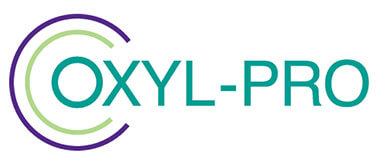Coagulation in water treatment removes solids from water. By selecting the right coagulant, you can improve the overall performance of a water system and ensure that water is safe for use.
This type of treatment can be applied to both water and wastewater.
What are Coagulation and Flocculation in Water Treatment?
Coagulation and flocculation are two processes that go together in water treatment. They are separate, but they are used one after the other to remove particles in water.
All water contains suspended particles, including water supplies for drinking and wastewater.
The smallest of these suspended particles are known as colloids. Colloids have a negative charge when they are suspended in water. This causes them to repel one another and become stabilised by suspension.
Stabilisation means that the particles are not clustered together, and this makes them difficult to remove from water.
The two processes of coagulation and flocculation make it possible to remove suspended particles from water as part of water treatment.
How Coagulation Water Treatment Works
Coagulation water treatment prevents the suspended particles from repelling one another and encourages them to form into clumps, or flocs.
Ultimately, the larger the particle, the easier it is to separate from the liquid.
This is the reason some form of coagulation is common in water treatments.
In fact, it goes back a long way, as far as Ancient Egypt. The Egyptians added seeds to water to fuse the membranes of bacteria together, making it easier to remove them.
Common examples of electrostatically charged particles in water include clay, iron, silica, paints, and oil.
By rapidly mixing the coagulant, you can ensure you are dispersing it properly, which will promote colliding of particles.
When the water surrounding newly formed particles is clear, this indicates that the charges of the particles have been neutralised and that the coagulant has done its job. If not, then you may require more coagulant.
How Flocculation Works
The flocculation process follows coagulation in water treatment. Coagulation is the charge neutralisation of fine particles, and flocculants are the agents that then promote the clumping of these particles together.
Flocculants are polymers, materials consisting of long, repeating chains of molecules. They are water-soluble, and will stabilise or enhance the flocculation of particles by strengthening flocs or adding to their weight. Polymers can be natural or synthetic.
Natural polymers, such as the seeds the Egyptians used, are toxin-free and biodegradable, but synthetic polymers are now more widely in use.
Flocculation is a gentler mixing stage, increasing the size of particles from micro-flocs to pin-flocs. Pin-flocs are large, visibly suspended particles. From this, flocculation causes them to grow into even larger clumps, known as macro-flocs.
Because flocculants are long-chain polymers, they carry a low charge, encouraging hydrogen bonding between particles.
Once the flocs have reached an optimum size, you can separate solids and liquids in the water.
This can involve various processes, including:
- Filtration
- Centrifugation
- Sedimentation
- Flotation.
How Does Temperature Affect Coagulation in Water Treatment?
Temperature can have a significant effect on coagulation and flocculation.
For all coagulants, floc formation is slower at lower temperatures. At some temperatures, with certain coagulants, flocs may break up and never reform to their original size.
This is most likely in temperatures around 15°C. Recovery of floc size is more reversible at lower temperatures.
Is Coagulation Caused by Bacteria in Water Treatment?
Suspended solids in water can be the result of natural causes, arising from organic materials such as algae, or inorganic materials such as sediment or silt.
Algae thrive in both freshwater and saltwater, but when they die, they are decomposed by microbes.
Sediment or silt mainly comes from run-off and erosion.
There can be various forms of solid pollutants in water, added to the environment by humans. These include pathogens, wastewater effluent, sewage and airborne particles.
Rather than being caused by bacteria, coagulation water treatment is the process of removing these solids from water, including bacteria.
However, although coagulation can remove particles and some dissolved matter, there may still be pathogens in the water.
According to the World Health Organisation (WHO), coagulation only removes between 32 and 87 per cent of bacteria.
What are the Common Coagulants Used in Water Treatment?
There are inorganic and organic coagulants used in water treatment.
Inorganic coagulants include:
- Aluminium coagulants – aluminium sulphate, aluminium chloride, sodium aluminate
- Iron coagulants – ferrous and ferric sulphate, ferric chloride, ferric chloride sulphate.
Inorganic coagulants will remove most suspended solids. Once you add them to water, they form aluminium or iron precipitates. These absorb impurities and clean the water. However, they do create large amounts of sludge that is rich in metal. They can also alter the pH of water significantly because they consume alkalinity in the water.
Organic coagulants include:
- Polyamines
- Polytannate
- Poly DADMAC (diallyl dimethyl ammonium chloride).
Organic coagulants can be applied cost-effectively at lower dosages and produce far lower quantities of sludge. They have minimal impact on pH levels.
How to Maximise the Effects of Water Treatment
Coagulation is a long-established water treatment, but it doesn’t remove all bacteria from water systems.
It makes sense, therefore, to use additional treatments to protect the integrity of water supplies.
Oxyl-Pro is a hydrogen peroxide-based treatment that removes biofilm from pipework to ensure the delivery of clean water via water systems.
It will kill legionella, pseudomonas and listeria rapidly and contains no toxic metals, making it suitable for domestic water systems. It is also effective when used in grey water systems such as rainwater harvesting.
For more information about Oxyl-Pro for water treatment, please call us on +44 1606 851 782, email enquiries@oxylpro.com or fill in our contact form and we’ll be in touch.

